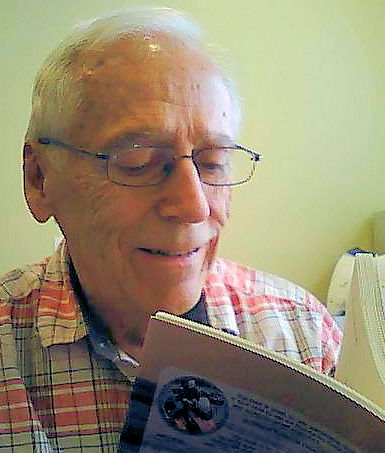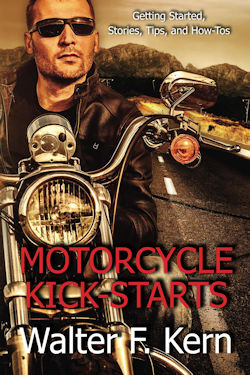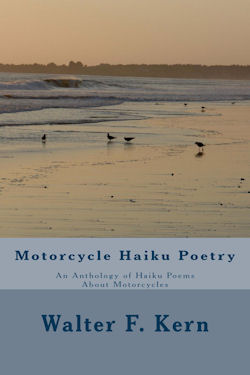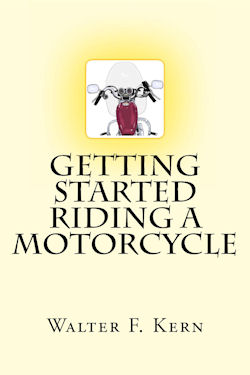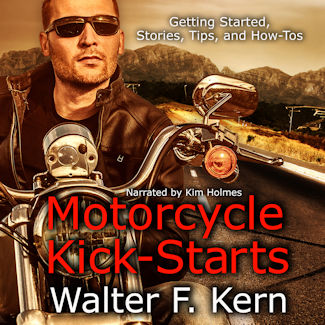Motorcycle User Reviews - 1995 Honda PC800 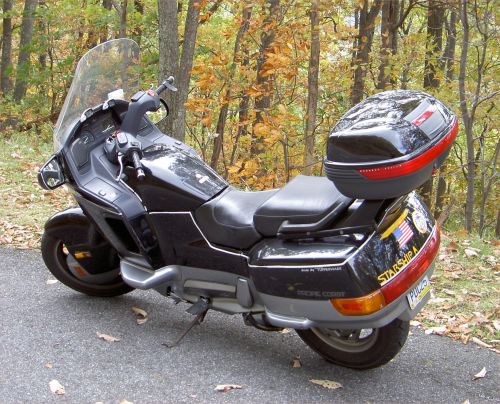
Riding a Honda Pacific Coast makes you a lightning rod for all kinds of questions and comments. Over the years, I've gotten used to the worst of them, realizing that any motorcyclist who utilizes the term "rolling porta-potty" has issues of their own to deal with. Lately, however, with the price of gas soaring and the realization that we'll probably never see sub-$2 per gallon gas again, the questions I've been getting are sharper, more focused, and far more intelligent. The Pacific Coast, or PC800, was introduced by Honda in the 1989 model year. It had a revolutionary look back then, the bike completely sheathed in plastic body panels, and a spacious clamshell trunk in the place of traditional saddlebags. The appearance was pure Starfleet, minus the warp drive. The futuristic shape found its way into a few movies, such as "Harley Davidson and the Marlboro Man," "Back to the Future," and "The Bourne Identity." Honda wanted the bike to appeal to the suit-and-tie set; a bike one could ride to work without the risk of soiling the Armani with grease or oil. With that in mind, the rear end was purposefully modeled after the Honda Accord of that era. The bike was produced for two years, the 1989 in Frigidaire White and the 1990 in a magnificent Candy Glory Red. However, the marketing folks at Honda rolled consecutive gutter balls, never really presenting the PC800 properly to the public. The bike was priced too high, and the flood of execu-commuters never materialized. Honda tried again in 1994, inflation having made the price of the bike much more palatable. Success was moderate and the bike was produced through the 1998 model year before the guillotine fell, this time for good. Since then, the bike has attracted a sizable international cult following (look for the "Body by Tupperware" decals), the members of which have realized the machine's many attributes. The group sponsors a lot of rides throughout the year, always easily identified. A parking lot full of PC800s resembles not so much a covey of bikes as a spilled bag of Skittles. The IPCRC (International Pacific Coast Riders Club) consists of some 2,800 members from 14 different countries, a total that climbs at a rate of 20 to 30 new members per week. From these owners one can find a wealth of information about the bike that somehow Honda never got around to promoting. A recent poll of members showed that the majority of them work in the engineering and IT fields, which is a strong statement in itself. Clearly, folks for whom precision is a way of life find this bike attractive. These days, the wallet-gutting routine of filling automobile gas tanks has a lot of commuters looking at motorcycles in an entirely new light; from the practicality standpoint. Maintenance issues are high on their list. One of the Pacific Coast's strengths is that it's about as close to "fill and forget" as you'll ever get with a motorcycle. Noteworthy are the hydraulic valves, which eliminate the need for valve adjustments. Over the eight years that I've owned my PC, my operating costs have consistently stayed below seven cents per mile. Surprisingly, the thing that impresses the non-traditional riders the most is the sound. The PC doesn't have the traditional motorcycle muffler, the kind that fits on the end of the tailpipe, sort of like Jason Bourne's silencer. Instead, the pipes run from the engine through a muffler shaped very much like a small car's. The resultant noise is somewhat reminiscent of something owned by George Jetson, or a very large industrial fan. One PC owner, however, managed to convert the 2-into-2 exhaust from the Shadow to the PC, resulting in a more traditional rumbly V-twin sound. Of course, people love the trunk. Even people who hate the bike love the trunk. Somewhere in the neighborhood of 40 to 50 liters, the space opens vertically, which means that you could lay a neatly folded suit coat (and a large briefcase) in that space and have it arrive at your destination neat and unwrinkled. Because the seams are overlapped and parallel to the ground, the space is completely waterproof. And when you open it, your possessions won't spill out onto the ground, as they are wont to do with side-opening bags. The addition of a Givi top box gives the rider actually more storage capacity than the Gold Wing.
The PC is an uncomplicated machine, despite its looks. The engine, a slightly re-worked version of the mill from the 750 Shadow, rated at 64 bhp, is capable, but hardly dramatic. It will go 120 mph, but you might want to take a good book along for the acceleration part of the ride. Like all Honda motors, however, it is quality through-and-through. It is common to find owners who have racked up in excess of 150,000 miles without any major repairs. And it's perfectly happy sipping 87 octane at a rate of 48 to 55 miles per gallon, depending on speed and aggressiveness. The 5-speed gearbox can be a bit clunky at times, but still does its thing with little fanfare. Shaft drive completes the drive train ensemble. The bike has a very low center of gravity, which makes it a very friendly machine to operate, even at parking lot speeds. At around 620 pounds wet, it is a bit heavy, but nothing you feel once underway. The full fairing and tall windshield provide a comfortable bubble for the rider. At high speeds, however, the bubble tends to collapse between the rider and the passenger, making the back seater feel buffeted, especially around the helmet area. The occasional appearance of bugs coming at you from behind will attest to the odd aerodynamics at work. But overall, the bike is very smooth and easy to operate. This is a machine that is equally at home on the Superslab with the trunk stuffed to the gills, or rippin' it up at Deal's Gap. The flexible nature of the PC's design also was revolutionary for its time. Back then, you had to choose between "go hard" motorcycles and "go far" motorcycles. The PC melded the two together quite nicely. Of course, no bike is completely perfect. Pacific Coast owners yearn for the 1100cc powerplant from the big Shadow. The tranny is a gear short, and the stator has very little excess capacity, so loading up aftermarket electronics requires the accurate computation of wattage. The gas tank, at 4.2 gallons needs to be bigger. PC riders complain that 180 miles is too short a distance to have to pull over and fuel up. The bike is that comfortable. The 1989 model is notorious for the trunk rubbing on the rear tire and a stator that can't seem to last more than 30,000 miles (both issues fixed for the 1990 model and beyond). Over the years, the older models have begun to experience a few problems with the mounting systems for the body panels, the plastic becoming somewhat brittle with age. All the model years are almost identical, so the availability of parts is still very good. A good-condition Pacific Coast with low miles can be had for less than 5 large, which makes for a very reasonable investment. This machine gets attention from the white collar crowd, those who are individualistic enough to eschew a Milwaukee product or any of their dozens of clones, (how can you call yourself a rebel when you're the same as everyone else?) and mature enough to know their own limitations as far as speed and power are concerned. For them, a bike is more "tool" than "toy." Therefore, practicality rules; and the Pacific Coast is eminently practical, but is still an absolute gas to ride. If you're tempted to ask, "So What?" bear in mind that this is what Honda's target demographic was when the bike was introduced. So the red-headed stepchild of motorcycles has finally found its niche, only 18 years after the fact. This is what owning a PC is like: A couple of years ago, I rode to a company picnic hosted by my wife's employer. I rolled up to the parking area, which was full of chrome and iron. From a distance I could see the sardonic smiles already starting. I parked the bike and endured the semi-drunken ribbing, which continued until I swung open the trunk lid to reveal ... a rolling cooler; both sides filled with ice, beer, and soda. Reverent silence followed. Practicality wins again. -- Ralph Couey User Reviews for Other Honda Models
|
||||
© 2015 Walter F. Kern. All rights reserved.
|


